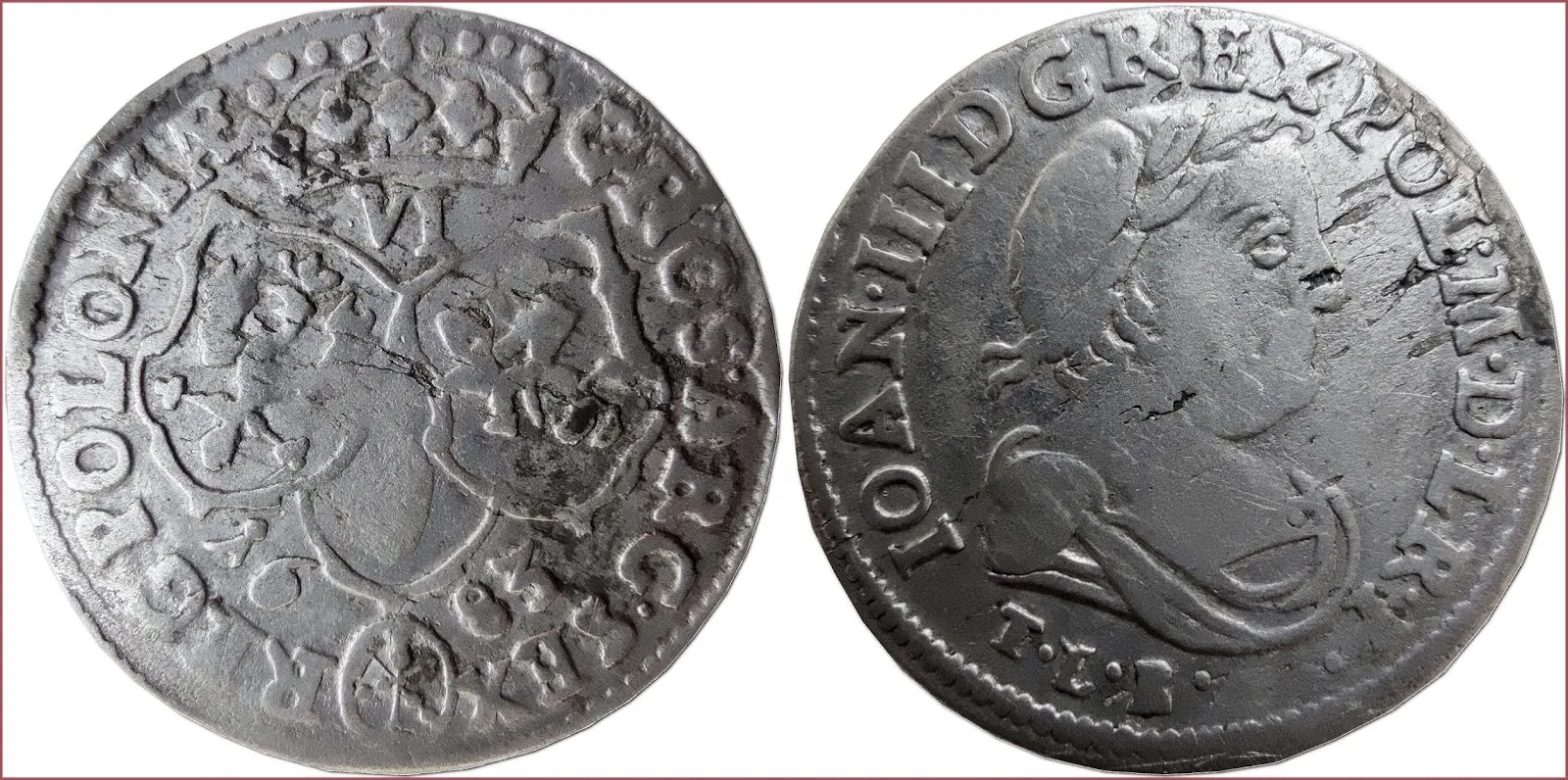SZOSTAK: COIN OF POLISH-LITHUANIAN COMMONWEALTH
Szostak (Szóstak), 1683: Polish-Lithuanian Commonwealth
Ruler: King of the Commonwealth /King of Poland and Grand Duke of Lithuania/ John III Sobieski (Polish "Jan III Sobieski") — national hero of Poland.
GROS. ARG. SEX REG. POLONIAE: Latin "Grossus Argentum Sex Regnum Poloniae" — Six silver groszy of the Kingdom of Poland).
Sign "VI" (6 groszy).
Simplified coat of arms of the Polish-Lithuanian Commonwealth: coats of arms of Poland and Lithuania (eagle as a symbol of Poland and horseman as a symbol of Lithuania).
Bottom: coat of arms "Jelita" (a Polish coat of arms that used by several szlachta families) of Marcin Zamoyski — treasurer of the Crown (Polish "Podskarbi wielki koronny").
IOAN III D. G. REX POL. M. D. L. R. P.: John III by the grace of God King of Poland, Grand Duke of Lithuania, Ruthenia, Prussia.
Portrait of John III Sobieski.
T.L.B. at the bottom: the signature of the mint leaseholder (Tytus Liwiusz Burattini).
Bydgoszcz mint.
- Silver: 25 mm - 2.96 g
- Reference price: 12$
COIN SZOSTAK — WHERE & WHEN (coins catalog: by names & emitents)
- POLISH-LITHUANIAN COMMONWEALTH (16th-18th centuries): szostak = 6 groszy
- KINGDOM OF POLAND (16th century): szostak = 6 groszy
- GRAND DUCHY OF LITHUANIA (16th century): szostak = 6 groszy
The name of the szostak coin, which equated to 6 groszy, is obviously related to its value. In Polish, "six" means "sześć". There are also the following coins from the same series of denominations: polgrosz (0.5 grosz), poltorak (1.5 grosz), dwugrosz (2 grosz), trojak (3 grosz) and czworak (4 grosz).
In numismatics there are several types of szostak: szóstak koronny, szóstak pruski, szóstak elbląski, szóstak gdański, szóstak toruński, szóstak litewski...











